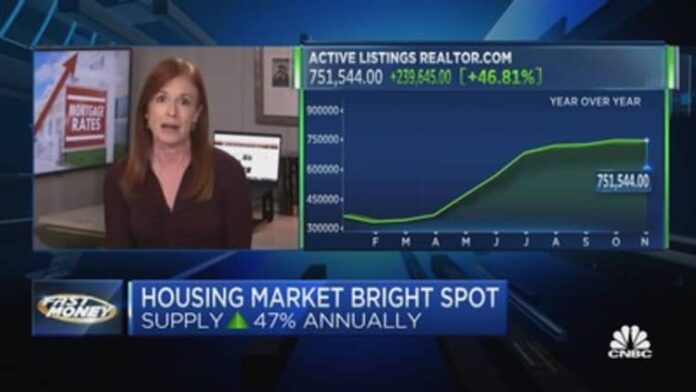Minerva Studio | Istock | Getty Images
Some expenses that come with home ownership can often be unpredictable — and costly.
According to a recent report by insurance company Hippo, homeowners spent an average of $6,000 on maintenance and repairs last year. A separate study by home services website Angi, which measured similar costs for 2022, shows that maintenance averaged $2,467 and home emergency expenses — i.e., an unexpected repair — averaged $1,953 ($4,420 total).
Regardless of what you pay for these expenses, they can unexpectedly turn a household’s budget upside down. While some of the costs can be unpredictable, there are things you can do to mitigate their sting, experts say.
More from Personal Finance:
What near-retirees should know about health savings accounts
More changes to the US pension system are on the way
Here are some tips to build your emergency reserves this year
Try to set aside at least 1% of your home’s value
For starters, the general advice is to set aside at least 1% to 3% of your home’s purchase price annually for a combination of home improvement, maintenance and repairs, said Angie Hicks, Angi’s chief customer officer.
“That goes for all three buckets,” Hicks said. “For a $400,000 house, that’s it [$4,420] in maintenance and emergency spending is closer to 1% in our report. You want to make sure you have that 1% covered.”
According to Redfin, the average selling price for a home in November was $393,756. (One percent of this amount is $3,937.)
Maintenance costs can reduce repair costs
While it’s wise to put money aside, maintenance can help reduce spending on unexpected repairs, Hicks said.
“We’re seeing an increased focus on maintenance activities, which is good to see,” Hicks said. “When there’s inflationary pressures, people… don’t want to be caught off guard, so they start doing more maintenance projects that they might have skipped before.”
And some things – like For example, remembering to replace your furnace filter regularly to keep the system running at its best – can often be done by the homeowner.
In the Hippo report, based on a survey of about 1,000 homeowners, 65% of respondents who had something gone wrong in their home in the past year said they could have prevented it with proactive maintenance.
As an example, it pays to visually inspect your roof a few times a year to make sure you don’t see any missing or curled shingles that warrant a repair before the problem worsens and you face extensive water damage, Hiccup said.
“You don’t want a leak,” Hicks said. “Water is your home’s worst enemy.”
While the specifics of a necessary roof repair will determine the cost, the average is $1,000 according to thisoldhouse.com. That compares to an average of $3,342 for water damage repairs, according to Angi.
Monitor and maintain your home’s systems
It pays to get your core systems like heating and cooling serviced regularly, says Courtney Klosterman, Home Insights Expert at Hippo.
“Also get to know the critical systems in your home — major appliances, plumbing, electrical, etc. — so you can monitor them for wear and tear over time,” Klosterman said.
You might want to keep track of how long important appliances in your household last. For example, stoves typically last 15 to 20 years with good maintenance, according to appliance manufacturer Carrier. As yours approaches that age, you know you’re financially ready to replace or repair it rather than be caught unawares by its failure.
Unexpected home-related expenses can weigh more heavily on homeowners, Klosterman said.
“When one thing goes wrong, it brings with it a surge of fear and anxiety about what might go wrong next,” she said. “A proactive approach to home care can save not only money, but also time and nerves.”















